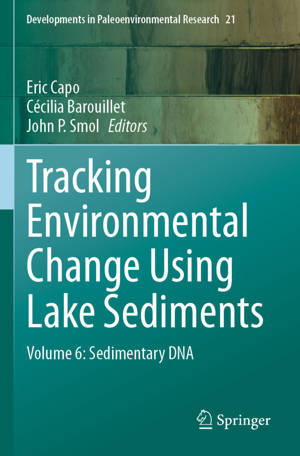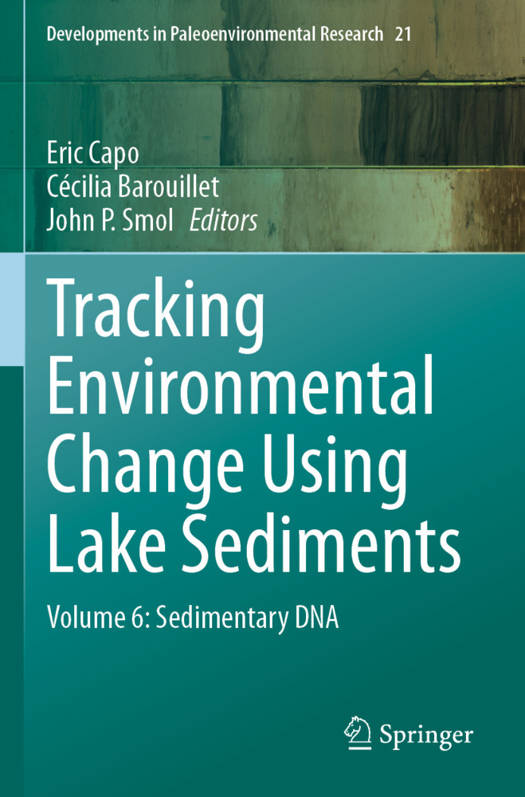
- Afhalen na 1 uur in een winkel met voorraad
- Gratis thuislevering in België vanaf € 30
- Ruim aanbod met 7 miljoen producten
- Afhalen na 1 uur in een winkel met voorraad
- Gratis thuislevering in België vanaf € 30
- Ruim aanbod met 7 miljoen producten
Zoeken
Tracking Environmental Change Using Lake Sediments
Volume 6: Sedimentary DNA
€ 240,45
+ 480 punten
Omschrijving
This book, entitled Tracking Environmental Change Using Lake Sediments: Volume 6 - Sedimentary DNA, provides an overview of the applications of sedimentary DNA-based approaches to paleolimnological studies. These approaches have shown considerable potential in providing information about the long-term changes of overall biodiversity in lakes and their watersheds in response to natural and anthropogenic changes, as well as tracking human migrations over the last thousands of years.
Although the first studies investigating the preservation of these molecular proxies in sediments originate from the late-1990s, the number of scientific publications on this topic has increased greatly over the last five years. Alongside numerous ecological findings, several sedimentary DNA studies have been dedicated to understanding the reliability of this approach to reconstruct past ecosystem changes. Despite the major surge of interest, a comprehensive compilation of sedimentary DNA approaches and applications has yet to be attempted. The overall aim of this DPER volume is to fill this knowledge gap.
Although the first studies investigating the preservation of these molecular proxies in sediments originate from the late-1990s, the number of scientific publications on this topic has increased greatly over the last five years. Alongside numerous ecological findings, several sedimentary DNA studies have been dedicated to understanding the reliability of this approach to reconstruct past ecosystem changes. Despite the major surge of interest, a comprehensive compilation of sedimentary DNA approaches and applications has yet to be attempted. The overall aim of this DPER volume is to fill this knowledge gap.
Specificaties
Betrokkenen
- Uitgeverij:
Inhoud
- Aantal bladzijden:
- 437
- Taal:
- Engels
- Reeks:
- Reeksnummer:
- nr. 21
Eigenschappen
- Productcode (EAN):
- 9783031438011
- Verschijningsdatum:
- 20/12/2024
- Uitvoering:
- Paperback
- Formaat:
- Trade paperback (VS)
- Afmetingen:
- 155 mm x 235 mm
- Gewicht:
- 701 g

Alleen bij Standaard Boekhandel
+ 480 punten op je klantenkaart van Standaard Boekhandel
Beoordelingen
We publiceren alleen reviews die voldoen aan de voorwaarden voor reviews. Bekijk onze voorwaarden voor reviews.










